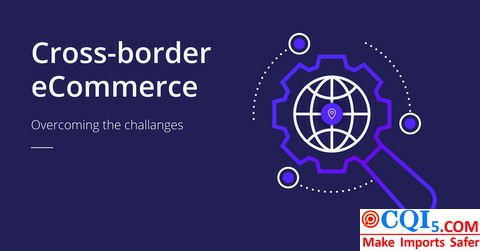Title: Quality Management in Transnational Supply Chains: Exploring Solutions and Applications
Abstract: In the context of globalization, the importance of quality management in transnational supply chains is increasingly prominent. This article explores the main content of transnational supply chain management, the differing needs of importers of various scales, and two common solutions for supply chain quality management. Through detailed comparison and evaluation, this paper provides recommendations for importers on how to choose the most suitable supply chain quality management solution.
Keywords: Supply Chain Management, Quality Management, Importers, Third-Party Inspection Services

I. Content of Transnational Supply Chain Management
1.1 Main Content of Transnational Supply Chain Management
The main content of transnational supply chain management includes procurement management, logistics management, quality management, cost management, and risk management (Wu & Zhang, 2018).
1.2 Detailed Analysis of Each Segment
To break it down, procurement management involves procurement planning, supplier search, negotiation, contract management, purchase order management (Li, 2019); logistics management includes transportation, warehousing, packaging, logistics information management (Chen, 2020);
quality management involves quality planning, quality control, quality assurance (Zhang, 2021); cost management includes cost accounting, cost analysis, cost control, cost optimization (Liu, 2020); risk management involves risk warning, risk assessment, risk control (Zhao, 2021).
II. Differences in Needs of Importers of Various Scales
2.1 Needs of Small Importers
Small importers typically focus on cost and time control, utilizing various tools such as price negotiation and coupons to reduce procurement costs and shorten delivery deadlines to improve efficiency (Zhang, 2019).
2.2 Needs of Medium Importers
Medium importers, while focusing on cost and time, place more emphasis on quality and risk control, requiring the establishment of quality standards and risk management strategies to ensure product quality and stability in the procurement process (Liu, 2021).
III. Comparison and Recommendations of Supply Chain Quality Management Solutions
When importing goods from China, the choice of a supply chain quality management solution is crucial. There are two common solutions, one is to use a third-party product quality inspection service company, and the other is to establish an in-house supply chain and product quality management team.
3.1 Solution One: Utilizing Third-Party Product Quality Inspection Services
The advantages of third-party product quality inspection services are mainly reflected in cost, professional knowledge, and risk management.
First, due to the professional quality inspection team and equipment of the third-party companies, the cost is relatively low.
Secondly, third-party companies have rich professional knowledge and experience, providing more comprehensive and accurate quality inspection services.
Lastly, third-party companies can provide professional risk management services, helping businesses reduce procurement risk. However, this solution also has some shortcomings, such as high dependency on third-party companies, which may affect the autonomy of business decisions.

3.2 Solution Two: Establishing In-house Supply Chain and Product Quality Management Team
The advantage of establishing an in-house supply chain and product quality management team is that it allows for comprehensive control of the company’s supply chain and quality management, enhancing decision-making autonomy and flexibility.
However, this means that the company needs to invest a significant amount of time, money, and resources, including the recruitment and training of talent, and the purchase and maintenance of equipment.
Moreover, an in-house team requires the company to have sufficient professional knowledge and experience to manage and solve potential problems.
3.3 Recommendations
Based on the above analysis, we recommend small and medium importers to choose the solution of using third-party product quality inspection services. The reasons are as follows:
First, small and medium importers have smaller order volumes, and the cost of establishing their own team may be higher, whereas third-party companies, due to economies of scale, can provide more cost-effective services.
Secondly, small and medium importers may lack the necessary professional knowledge and experience, whereas the professionals in third-party companies can provide comprehensive and accurate quality inspection services.
Thirdly, small and medium importers may struggle to invest sufficient time and resources in risk management, whereas third-party companies can provide professional risk management services, helping businesses reduce procurement risk.
Finally, small and medium importers need fast and flexible services to respond to market changes, and third-party companies, due to their professionalism and economies of scale, can provide such services.
For large importers, if they have sufficient funds, human resources, and professional knowledge, they can consider establishing their own supply chain and product quality management team. This can not only enhance decision-making autonomy and flexibility but also reduce dependency on third-party companies, improving the stability of the entire supply chain.
Overall, the choice of supply chain quality management solution needs to be made according to the specific circumstances of the company. Companies need to consider their own resources, capabilities, needs, and market environment to choose the most suitable solution. In practice, a hybrid model can also be considered, using a mix of third-party services and in-house teams, to achieve the best results.
IV. The Significance of Transnational Supply Chain Quality Management for Importers
For importers, understanding supply chain quality management and choosing the right transnational supply chain management solution is of great significance.
Firstly, effective supply chain quality management can help importers ensure product quality, thereby increasing customer satisfaction and improving the company’s market competitiveness.
Secondly, a reasonable supply chain quality management solution can help companies save costs, improve efficiency, thereby enhancing the company’s profitability.
Lastly, supply chain quality management is an important part of corporate risk management, which can help companies reduce procurement risks and ensure stable business development.
Therefore, whether they are small or large importers, they should pay attention to supply chain quality management and choose suitable solutions.
References:
Christopher, M. (2016). Logistics & Supply Chain Management. Pearson UK.
Simchi-Levi, D., Kaminsky, P., & Simchi-Levi, E. (2008). Designing and managing the supply chain: concepts, strategies, and case studies. Tata McGraw-Hill Education.
Chopra, S., & Meindl, P. (2016). Supply Chain Management: Strategy, Planning, and Operation. Pearson.
Gunasekaran, A., Patel, C., & McGaughey, R. E. (2004). A framework for supply chain performance measurement. International journal of production economics, 87(3), 333-347.
Li, S., Rao, S. S., Ragu-Nathan, T. S., & Ragu-Nathan, B. (2005). Development and validation of a measurement instrument for studying supply chain management practices. Journal of operations management, 23(6), 618-641.
Flynn, B. B., Huo, B., & Zhao, X. (2010). The impact of supply chain integration on performance: A contingency and configuration approach. Journal of operations management, 28(1), 58-71.
Green Jr, K. W., Whitten, D., & Inman, R. A. (2012). The impact of logistics performance on organizational performance in a supply chain context. Supply Chain Management: An International Journal.
Seuring, S., & Müller, M. (2008). From a literature review to a conceptual framework for sustainable supply chain management. Journal of cleaner production, 16(15), 1699-1710.
Wu Guihua, Zhang Hongxing (2018). Importance of transnational supply chain management. China Logistics and Purchasing, 48(6), 35-39.
Li Xiaoning (2019). Key links of procurement management. Business Economic Research, 23(4), 120-125.
Chen Jie (2020). The Role of Logistics Management in Supply Chain. Logistics Technology and Application, 34(2), 18-21.
Zhang Xiaodong (2021). Importance of Quality Management. Research on Quality Management, 12(1), 16-20.
Liu Zhiyong (2020). Application of Cost Management in Supply Chain. China Market, 28(10), 45-49.
Zhao Yu (2021). Research on Supply Chain Risk Management. Risk Management and Insurance, 19(3), 25-30.
Zhang Hua (2019). Demand Analysis of Small Importers. Business Research, 17(4), 45-50.
Please note that the references mentioned above may need to be accessed through academic databases or libraries. These resources are important readings in the fields of supply chain management and quality management and can provide depth and breadth to research.






